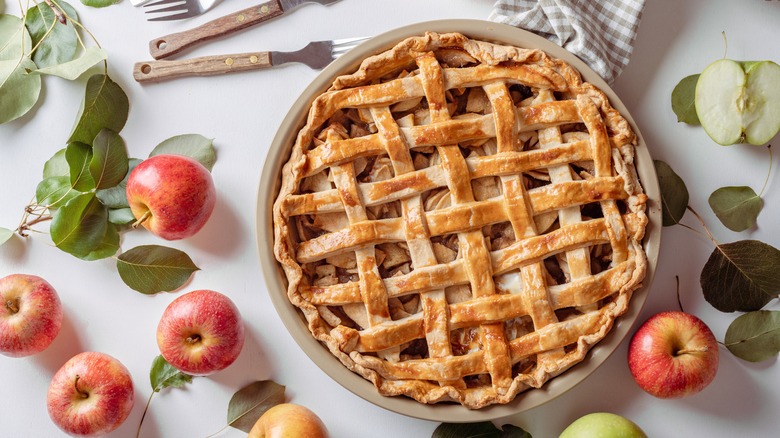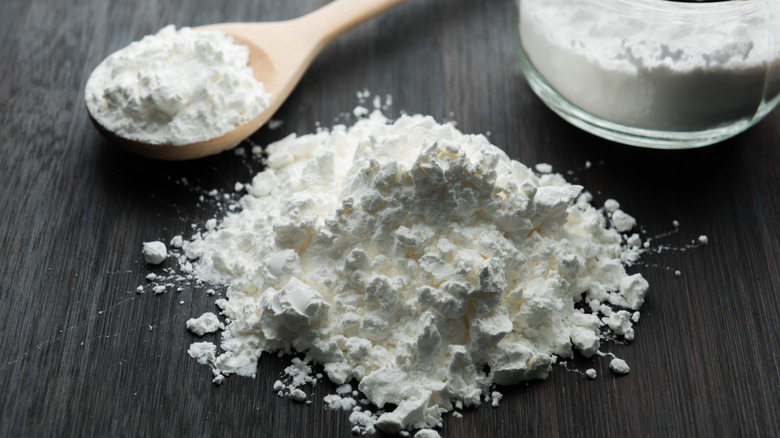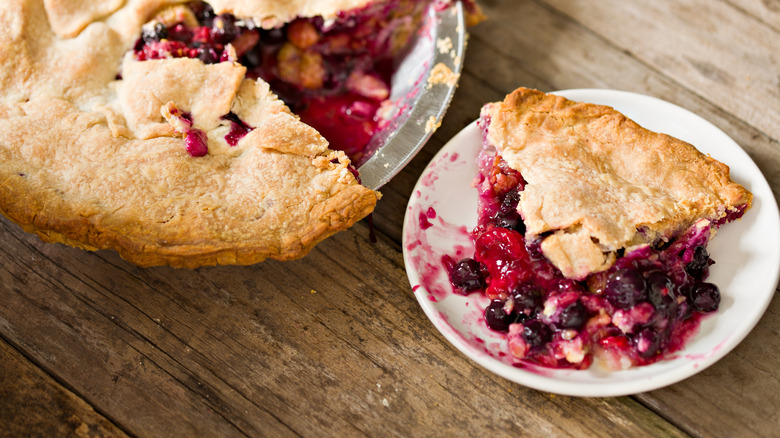Tapioca Can Solve Your Messiest Pie Problems
Pie makes for a delicious addition to any meal. The perfect pumpkin pie recipe hits the spot in the fall, and berry pies are a go-to for many people in the summer. Fruit-based pies can be tricky to get just right, though. Most fruit is full of juice, and that can create a messy problem when it comes time to slice your pie.
A watery pie isn't just a mess. It can cause the crust to become soggy, which just isn't as hearty and appetizing as a pie with a nice, firm filling. Even when you add a traditional thickener such as flour or cornstarch, your pie can end up runny. To combat this problem, all you need is a tiny bit of tapioca. Buy instant tapioca from the store, which comes ground up, and add it to your pie filling as a thickener. This will help your pie stay nice and thick even at room temperature.
How to use tapioca in your pie
Flour and cornstarch are common thickeners, but these ingredients don't always work the best. They can cease to be effective when they come in contact with acidic ingredients such as lemons or apples. Too much flour can also alter the taste of your pie.
The solution is tapioca. Tapioca is a starch that comes from the root of the cassava plant, and it comes in various forms including flour, pearls, and beads. When baking a pie, you want to look for either minute tapioca or instant tapioca. This will be in the form of small granules. For best results, grind them even further with a food processor or a mortar and pestle. The smaller you can get the tapioca, the smoother your pie will be.
Once you have your tapioca ground, whisk it in with your dry ingredients. You can use this in place of the cornstarch or flour the recipe may call for as a thickener. If replacing cornstarch, you can use a one-to-one ratio. If the recipe calls for flour, you can use half that amount of tapioca. Once you mix the dry ingredients with the rest of the filling, let the mixture sit for 10 to 15 minutes before baking so the tapioca can absorb the fruit juices. When your pie is finished, the filling will have a gelatin-like texture, but it won't become watery at room temperature like actual gelatin.
Why does pie filling get watery?
According to My Food Data, some of the most popular fruits used in pies have high water content; blackberries are up to 88 percent water, apples are up to 86% water, and blueberries are up to 84% water. When the fruit is cooked, the hemicelluloses in the cell walls break down. When this happens, the water content of the fruit is able to escape, resulting in a watery pie filling.
Your pie filling might also be watery if you're making a few mistakes in your baking process. One reason might be failing to vent your pie. Cutting slits into the top crust of your pie allows steam to escape during the baking process. Failing to do so traps in the steam, leaving your pie runny.
Pie filling can also be watery if you cut into the pie too soon. For best results when using tapioca to thicken your pie filling, let your pie sit to cool overnight before slicing it. If you can't do that, at least wait until it cools to give it some more time to solidify.


